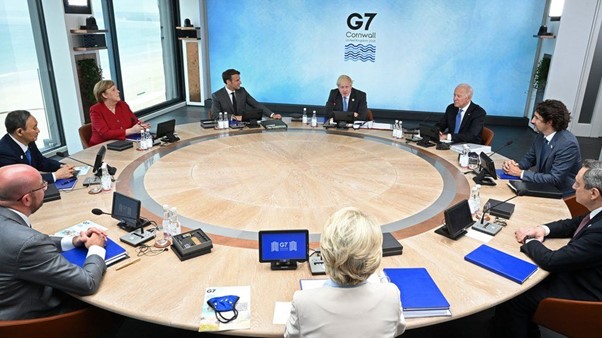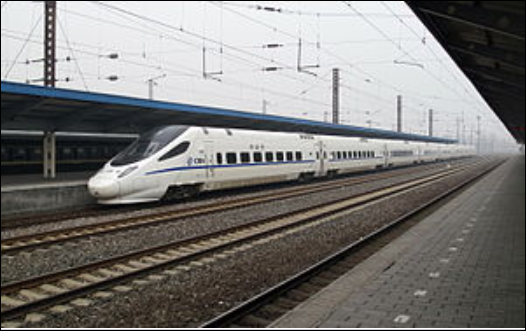Why China is excluded in G7 summit?
Author: Koon Yew Yin
Publish date:
China has warned the G7 leaders that the days when a "small" group of countries decided the fate of the world were long gone.

The G7 leaders must read this brief lesson in history. They should be ashamed of themselves.
And now the million-dollar question...????
9. Why are the G7 members see China as a threat even though China is the only major nation on earth that has never invaded or occupied another country?
Answer : Ego or fear of retribution?
The comments, by a spokesman for the Chinese embassy in London, come as the leaders, who are meeting in England, seek a unified position over China.
They adopted a spending plan in response to a massive Chinese scheme. US President Joe Biden is determined that Western powers need to act now to counter a resurgent China. Joe Biden is promising more financial support for developing countries hit by the climate crisis, and funds for infrastructure projects in the developing world, an alternative to a Chinese programme.
President Biden said he wanted the US-backed Build Back Better World (B3W) plan to be a higher-quality alternative to Beijing's Belt and Road Initiative (BRI). The scheme has helped finance trains, roads, and ports in many countries, but has been criticised for saddling some with debt.
Joe Biden is like telling a joke because US does not even have 1 high speed rail.
China High-Speed Rail
High-speed rail (HSR) in China is the world's longest high speed railway network and most extensively used -- with a total length of 37,900 km by the end of 2020. The HSR network encompasses newly built rail lines with a design speed of 200–350 km/h (120–220 mph). China's HSR accounts for two-thirds of the world's total high-speed railway networks. Almost all HSR trains, track and service are owned and operated by the China Railway Corporation under the brand China Railway High-speed (CRH).
High-speed rail developed rapidly in China over the past 15 years. CRH was introduced in April 2007 and the Beijing-Tianjin intercity rail, which opened in August 2008, was the first passenger dedicated HSR line. Currently, HSR extends to all provincial-level administrative divisions except Macau and Tibet. The HSR network reached just under 38,000 km (24,000 mi) in total length by the end of 2020. The HSR building boom continues with the HSR network set to reach 70,000 km (43,000 mi) in 2035.
The advent of high-speed rail in China has greatly reduced travel time and has transformed Chinese society and economy. A World Bank study found "a broad range of travellers of different income levels choose HSR for its comfort, convenience, safety and punctuality."
Notable HSR lines in China include the Beijing–Guangzhou high-speed railway which at 2,298 km (1,428 mi) is the world's longest HSR line in operation, and the Beijing–Shanghai high-speed railway with the world's fastest operating conventional train services. The Shanghai Maglev is the world's first high-speed commercial magnetic levitation ("maglev") line, whose trains run on non-conventional track and reach a top speed of 430 km/h (267 mph). In 2020, China started testing a maglev prototype train that runs at 600 km/h and aims to put a 500-km-long high-speed maglev line into commercial use by 2025.

US should follow China
Implementing high-speed rail (HSR) will provide the Americans with more transportation choices. It will also make sure that the people remain an economic engine, and meets the environmental and energy challenges of this century.
Investing in high-speed rail:
- Creates Jobs:Building high-speed rail will create hundreds of thousands of jobs. Every $1 billion in investment creates 24,000 jobs. These are highly skilled jobs that will revitalize the domestic rail industries supplying transportation products and services. Many additional jobs are created through the commerce fostered through the economic activity and development which they spark.
- Increases Economic Activity:Every $1 invested creates $4 in economic benefits. Upgrading passenger operations on newly revitalized tracks, bridges and rights of way is spurring business productivity along corridors. The rail services will connect Americans’ economically vital mega-regions and help keep them mobile, productive, efficient and internationally competitive.
- Reduces Congestion and Boosts Productivity:Congestion on our nation’s roads costs $140 billion in lost time and productivity. The U.S. population is projected to grow by another 100 million people in the next 40 years. The population growth is creating mega-regions that will not prosper unless they can be freed from the stranglehold of highway and airport congestion. At the same time, the United States cannot build enough highway capacity or airport runways to meet demand.
- Reduces the Nation’s Dependence on Foreign Oil:Implementing high-speed rail will keep billions of dollars in the U.S. economy by decreasing the amount of oil that the U.S. consumes. According to the International Association of Railways (UIC), high-speed rail is eight times more energy efficient than airplanes and four times more efficient than automobile use. It will also decrease greenhouse gas emissions and improve air quality.
- Expands Travel Choices and Improves Mobility:High-speed rail can deliver people from one downtown to another as fast as or faster than air travel. The addition of HSR as an integrated part of America’s transportation system will help airports work better and highways work better. It will also expand options for citizens in rural and small urban communities with increased transfer points and feeder services that connect with new HSR corridors.

0 comments:
Post a Comment